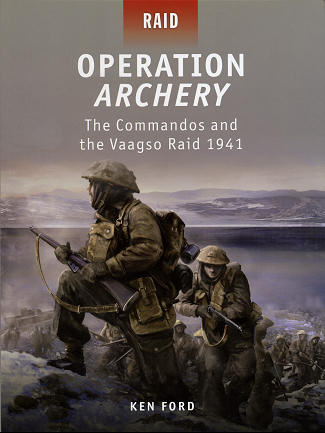 Right after
the 'miracle of Dunkirk', which was actually pretty much a disaster for the
British Army, there was a need to do something more than just a few pinprick
raids against the Germans. It was obvious that nothing major would be done in
Europe for many years so something had to be done.
Right after
the 'miracle of Dunkirk', which was actually pretty much a disaster for the
British Army, there was a need to do something more than just a few pinprick
raids against the Germans. It was obvious that nothing major would be done in
Europe for many years so something had to be done.
As mentioned, there were a few rather poorly coordinated
raids on various parts of the coast, but these did little to really hurt the
German war machine. The benefit of these somewhat bungled events was they it let
planners know what did and what did not work. It also taught the importance of
proper planning as one coastal raid happened during high tide and it was a
miracle that anyone got ashore.
It was decided that Norway would be a good place to
stage a major operation. It was where the Germans got their supplies of iron ore
to make steel and there was a lot of coastal shipping traffic that was
relatively safe behind the numerous coastal islands that dot Norway.
A two pronged attack was planned with troops invading
the Loften Islands to the north and Vaagso to the south. The northern raid was
supposed to keep troops on the islands for several days while shipping was
interrupted and facilities destroyed. The Vaagso raid was to destroy the German
infrastructure and destroy the fish oil plants as fish oil was an important
ingredient in a number of processes from ammunition to lubricants.
The Royal Navy was not fond of the idea of having so
many ships involved, but there was no getting around that warships were needed.
The largest ships were cruisers with most being destroyers as well as the
required transports for the commandos and other troops.
The plans were made and troops were trained to where
everyone knew their job. It was important to have local air superiority so the
RAF was to do their part by bombing gun emplacements and airfields nearby to
prevent the movement of the Luftwaffe. It was one of the first combined services
operations and as such, went particularly well.
I won't ruin the book for you, but to say that the
Vaagso raid went quite well and the northern raid on the Loften Islands was a
failure would be the jist of things. However, this book concentrates on the
Vaagso raid. It covers the units involved, the plans, the dispostion of the
German defense and finally the raid itself. We are graced with a number of
photos taken during the raid and that really helps to get a feel for how the
raid progressed.
It is an excellent book that delves into small unit
operations as few have in the past. It is a book that will keep your interest to
see how things worked out and provides insights into the first really successful
commando operation held by the British. It is a book that I can highly recommend
to you.
June 2012
For more on the complete line of Osprey books,
visit www.ospreypublishing.com. In the US, it is
Osprey Direct at 44-02 23rd St, Suite 219, Long Island City, NY 11101., where you can
get a catalogue of available books.
If you would like your product reviewed fairly and fairly quickly, please contact the editor or see other details in the
Note to
Contributors.
 Right after
the 'miracle of Dunkirk', which was actually pretty much a disaster for the
British Army, there was a need to do something more than just a few pinprick
raids against the Germans. It was obvious that nothing major would be done in
Europe for many years so something had to be done.
Right after
the 'miracle of Dunkirk', which was actually pretty much a disaster for the
British Army, there was a need to do something more than just a few pinprick
raids against the Germans. It was obvious that nothing major would be done in
Europe for many years so something had to be done.